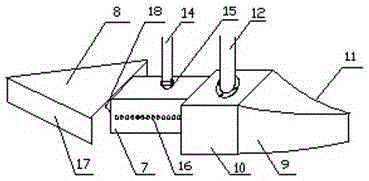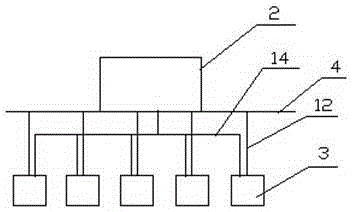Soil sterilizing agent
A sterilant and soil technology, applied in the field of pesticides, can solve the problems of soil and water source environmental pollution, damage to soil nutrient structure, and inability to be fully utilized, and achieve high safety, low dosage, good insecticidal and antibacterial effects Effect
- Summary
- Abstract
- Description
- Claims
- Application Information
AI Technical Summary
Problems solved by technology
Method used
Image
Examples
Embodiment 1
[0032] A soil sterilizer described in this embodiment is made of the following raw materials in parts by weight: 8 parts of onions, 14 parts of cloves, 8 parts of star anise, 4 parts of geranium seeds, 9 parts of centipedes, and 11 parts of nasturtiums , 9 parts of catechu, 7 parts of ginkgo testa, 85 parts of toluene, 7 parts of alkylphenol polyoxyethylene ether formaldehyde condensate, 0.7 parts of alkylphenol polyoxyethylene ether and its phosphate ester, 3 parts of polyethylene glycol , 0.4 parts of silicone defoamer, 60 parts of deionized water.
[0033] The preparation method of described a kind of soil sterilant, comprises the following steps:
[0034] (1) Extract 8 parts of onions, 14 parts of cloves, 8 parts of star anise, 4 parts of geranium seeds, 9 parts of centipede, 11 parts of nasturtium, and 9 parts of catechu with ultra-zero carbon dioxide to obtain a concentration of 4g / ml of extract, the extraction temperature is 55°C, and the pressure is 29MPa;
[0035] ...
Embodiment 2
[0053] A soil sterilizer described in this embodiment is made of the following raw materials in parts by weight: 5 parts of onion, 15 parts of clove, 6 parts of star anise, 5 parts of geranium, 8 parts of basil, 12 parts of nasturtium , 6 parts of catechu, 8 parts of ginkgo testa, 60 parts of rosin-based vegetable oil, 8 parts of phenylethylphenol polyoxyethylene ether, 0.5 part of alkylphenol polyoxyethylene ether formaldehyde condensate sulfonate, 5 parts of propylene glycol, 0.2 parts of silicone defoamer, 70 parts of deionized water.
[0054] The preparation method of described a kind of soil sterilant, comprises the following steps:
[0055] (1) Extract 5 parts of onions, 15 parts of cloves, 6 parts of star anise, 5 parts of geranium seeds, 8 parts of centipede, 12 parts of nasturtium, and 6 parts of catechu with super-zero carbon dioxide to obtain a concentration of 3g / ml of extract, the extraction temperature is 56°C, and the pressure is 28MPa;
[0056] (2) Smash 8 p...
PUM
 Login to View More
Login to View More Abstract
Description
Claims
Application Information
 Login to View More
Login to View More - R&D
- Intellectual Property
- Life Sciences
- Materials
- Tech Scout
- Unparalleled Data Quality
- Higher Quality Content
- 60% Fewer Hallucinations
Browse by: Latest US Patents, China's latest patents, Technical Efficacy Thesaurus, Application Domain, Technology Topic, Popular Technical Reports.
© 2025 PatSnap. All rights reserved.Legal|Privacy policy|Modern Slavery Act Transparency Statement|Sitemap|About US| Contact US: help@patsnap.com



